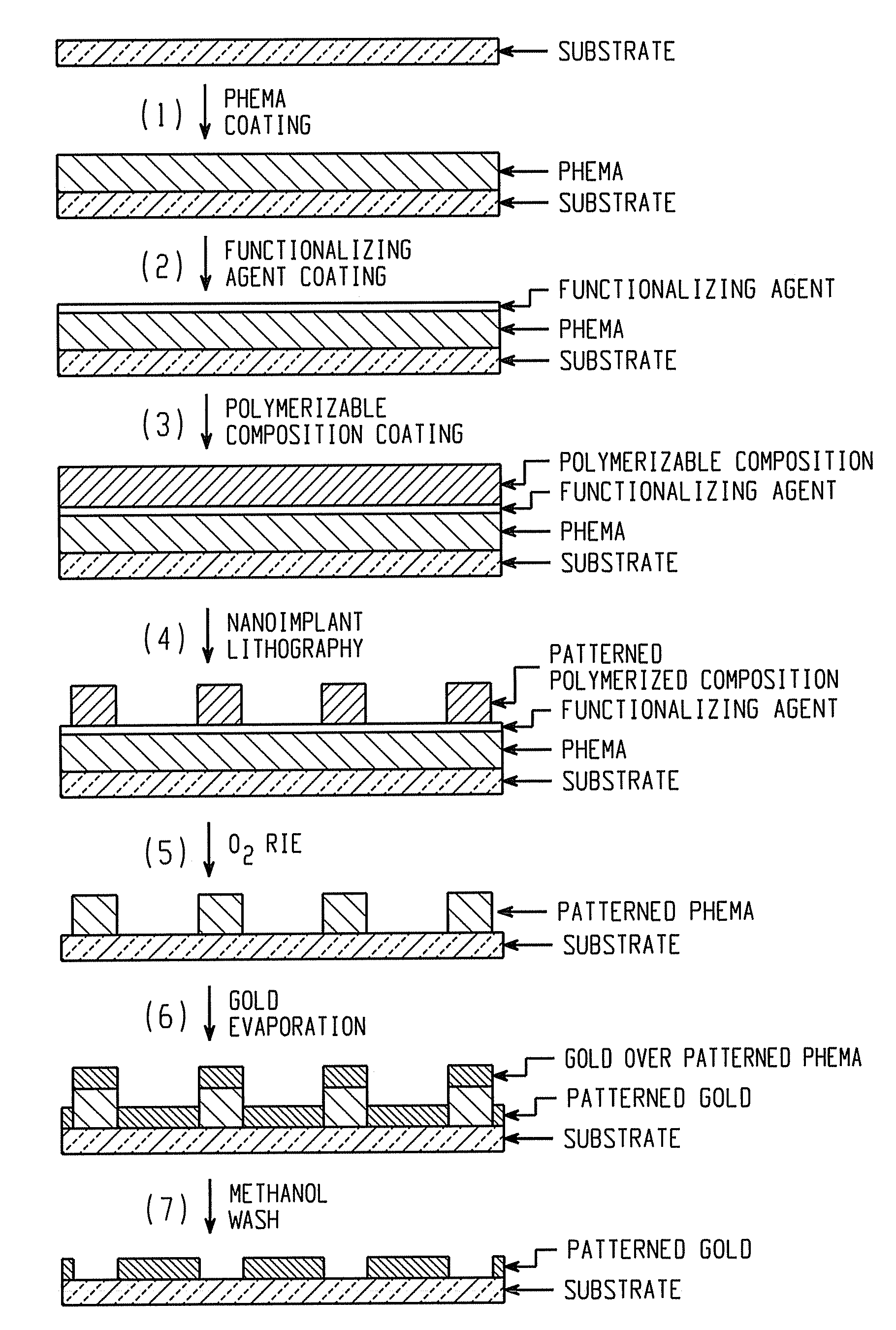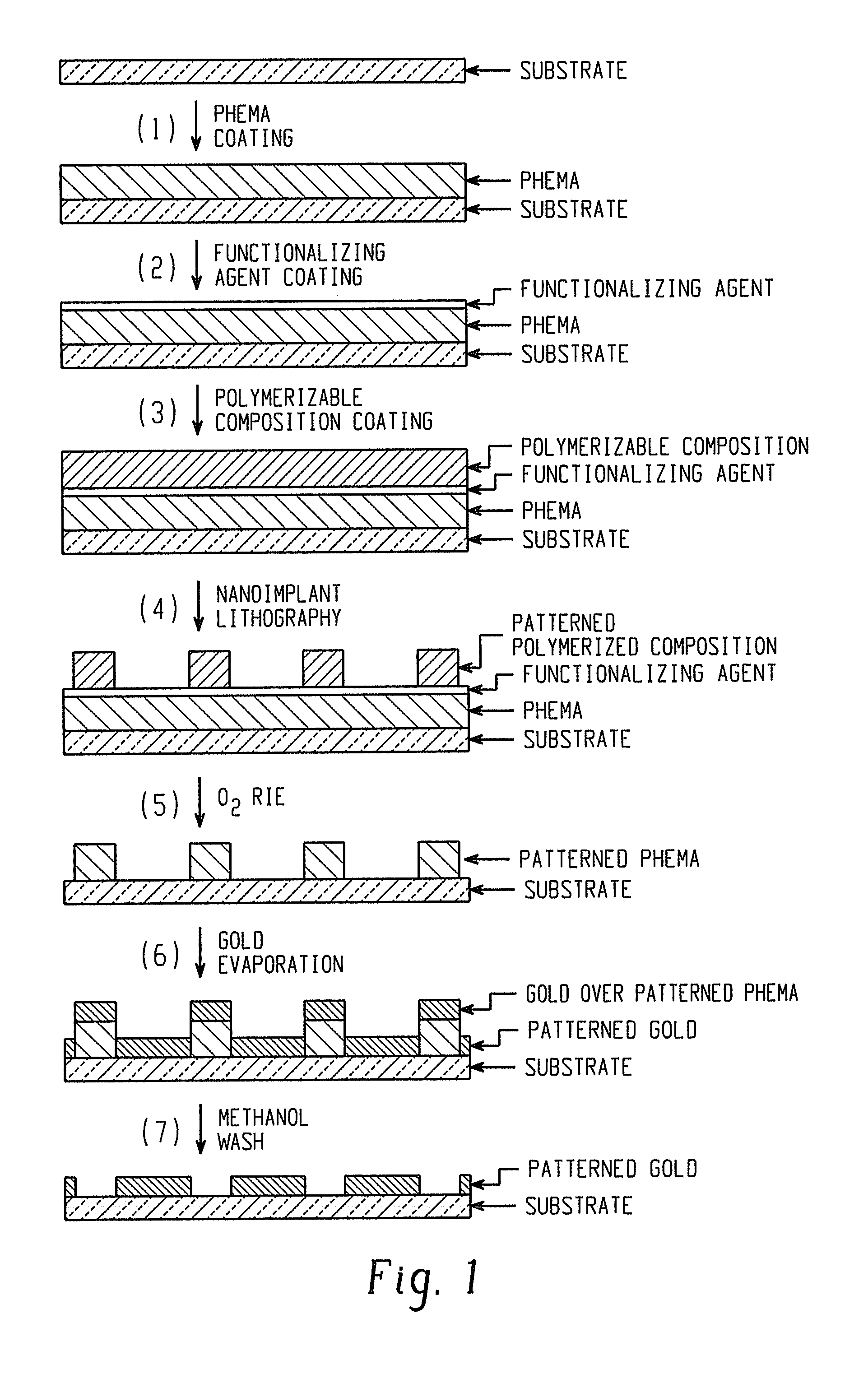Article with phema lift-off layer and method therefor
a technology of phema and phema, which is applied in the field of articles with phema lift-off layers and methods therefor, can solve the problem of restricting the use of many polymeric materials as substrates
- Summary
- Abstract
- Description
- Claims
- Application Information
AI Technical Summary
Benefits of technology
Problems solved by technology
Method used
Image
Examples
example 1
[0055]PHEMA was synthesized by the following procedure. Ethanol (7.5 milliliters (mL)) was taken in a test-tube and nitrogen was bubbled through it for 5 minutes. Azobisisobutyronitrile (AIBN; 0.07 grams (g), 0.43 millimoles (mmol)), HEMA (5.37 g, 5 mL, and 41.31 mmol), and dodecane thiol (0.43 g, 0.5 mL) were dissolved in ethanol and the solution was heated under nitrogen at 60° C. for 4 hours. The solution was cooled down and the polymer product was precipitated dropwise in hexanes. The polymer product was filtered, washed with hexanes and dried to obtain PHEMA (4.5 g, 84%) as a white solid. Analysis by gel permeation chromatography (GPC) in dimethylformamide indicated a number average molecular weight, Mn, of 32,353 atomic mass units, and a polydispersity index, PDI (Mw / Mn), of 1.37.
[0056]A clean silicon wafer was washed with ethanol and dried, and a PHEMA solution (8 weight percent in methanol) was spin coated (3000 rotations per minute (rpm) for 30 seconds) on the wafer. The wa...
PUM
| Property | Measurement | Unit |
|---|---|---|
| weight percent | aaaaa | aaaaa |
| weight percent | aaaaa | aaaaa |
| thickness | aaaaa | aaaaa |
Abstract
Description
Claims
Application Information
 Login to View More
Login to View More - R&D
- Intellectual Property
- Life Sciences
- Materials
- Tech Scout
- Unparalleled Data Quality
- Higher Quality Content
- 60% Fewer Hallucinations
Browse by: Latest US Patents, China's latest patents, Technical Efficacy Thesaurus, Application Domain, Technology Topic, Popular Technical Reports.
© 2025 PatSnap. All rights reserved.Legal|Privacy policy|Modern Slavery Act Transparency Statement|Sitemap|About US| Contact US: help@patsnap.com



